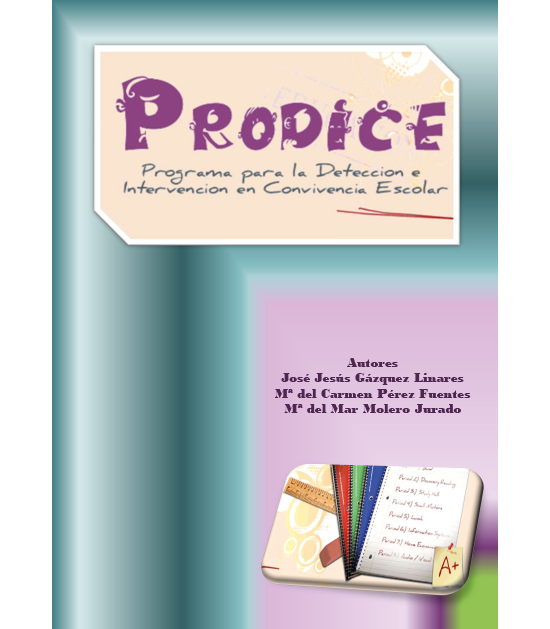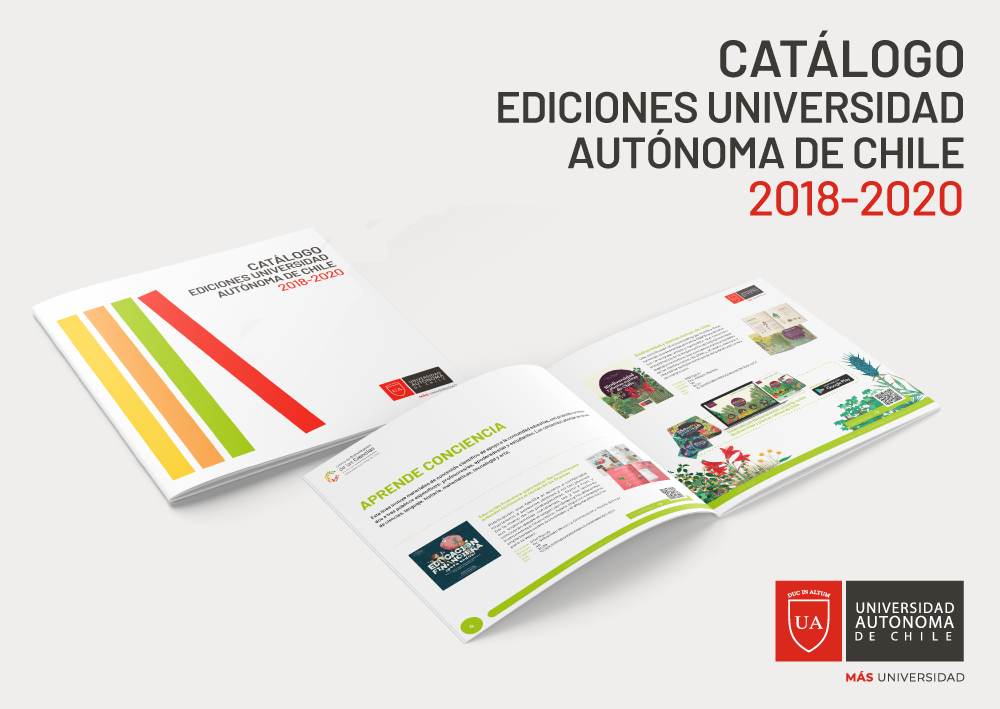PRODICE. Programa para la detección e intervención en convivencia escolar
Palabras clave:
Convivencia escolar, Violencia escolar, ProgramasSinopsis
Referencias
Abramovay, M. (2005). Violencia en las escuelas: un gran desafío. Revista Iberoamericana de Educación, 38, 53-66.
Abramovay, M. y Rua, M. (2002). Violences in the schools. Brasilia: UNESCO, Coordinación DST/AIDS del Ministerio de Salud, Secretaría de Estado de los Derechos Humanos del Ministerio de Justicia.
Achenbach, T.M. y Edelbrock, C.S. (1983). Manual for the child behavior checklist and revised child behavior profile.Burlington: University of Vermont.
Aguilera, M., Muñoz, G. y Orozco, A. (2007). Disciplina, violencia y consumo de sustancias nocivas a la salud en escuelas primarias y secundarias de México. México, D.F.: Instituto Nacional para la Evaluación de la Educación.
Albores-Gallo, L., Sauceda-García, J.M., Ruiz-Velasco, S. y Roque-Santiago, E. (2011). El acoso escolar (bullying) y su asociación con trastornos psiquiátricos en una muestra de escolares en México. Salud Pública de México, 53, 220-227.
Alikasifoglu, M., Erginoz, E., Ercan, O. Uysal, O., Kaymak, D.A. e Ilter, O. (2004). Violent behavior among Turkish high school students and correlates of physical fighting. European Journal of Public Health, 14(2), 173-177.
Australian Government Department of Education, Science and Training (2003). The National Safe Schools Framework. Australia: Commonwealth of Australia.
Blaya, C., Debarbieux, E., Del Rey, R. y Ortega, R. (2006). Clima y violencia escolar. Un estudio comparativo entre España y Francia. Revista de Educación, 339, 293-315.
Byrne, B. (1994). Bullies and victims in a school setting with reference to some Dublin schools. Irish Journal of Psycology, 15(4), 574-586.
Cangas, A.J., Gázquez, J.J., Pérez, M.C., Padilla, D. y Miras, F. (2007). Evaluación de la violencia escolar y su afectación personal en una muestra de estudiantes europeos. Psicothema, 19(1), 114-119.
Castillo, C. y Pacheco, M.M. (2008). Perfil del maltrato (bullying) entre estudiantes de Secundaria en la ciudad de Mérida, Yucatán. Revista Mexicana de Investigación Educativa, 13(38), 825-842.
Cepeda-Cuervo, E., Pacheco-Durán, P., García-Barco, L. y Piraquive-Peña, C. (2008). Acoso Escolar a Estudiantes de Educación Básica y Media. Revista Salud Pública, 10(4), 517-528.
Cerezo, F. (2000). Bull-S. Test de evaluación de la agresividad entre escolares. Madrid: Albor-Cohs.
Cerezo, F. (2009). Analyzing bullying in Spanish Schools. International Journal of Psychology and Psychological Therapy, 9, 383-394.
Chen, L.M. y Cheng, Y.Y. (2013). Prevalence of school bullying among secondary students in Taiwan: Measurements with and without a specific definition of bullying. School Psychology International, 34(6), 707-720.
Cluver, L., Bowes, L. y Gardner, F. (2010). Risk and protective factors for bullying victimization among AIDS-affected and vulnerable children in South Africa. Child Abuse & Neglect, 34(10), 793-803.
Collins, K., McAleavy, G. y Adamson, G. (2004). Bullying in schools: A Northern Ireland study. Educational Research, 46, 55-71.
Comisión Nacional para el Desarrollo y Vida sin Drogas (2009). Resultados delII Estudio Nacional: Prevención y Consumo de Drogas en Estudiantes de Secundaria 2007. Lima: Gerencia de Prevención y Rehabilitación-DEVIDA.
Cornell, D., Gregory, A., Huang, F. y Fan, X. (2013). Perceived prevalence of teasing and bullying predicts high school dropout rates. Journal of Educational Psychology, 105(1), 138.
Costa, P.J. y Pereira, B.O. (2010). O bullying na escola: A prevalência eo sucesso escolar. I Seminário Internacional “Contributos da Psicologiaem Contextos Educativos”. Braga: Universidade do Minho.
Craig, W., Harel-Fish, Y., Fogel-Ginvald, H., Dostaler, S., Hetland, J., Simons-Morton, D., Molcho, M., Gasparde, M., Overpeck, M., Due, P. y Pickett, W. (2009). A cross-nationalprofile, bullying and victimization among adolescents in 40 countries. International Journal of Public Health, 54(2), 216-224.
Cross, D., Epstein, M., Hearn, L., Slee, P., Shaw, T. y Monks, H. (2011). National Safe Schools Framework: Policy and practice to reduce bullying in Australian schools. International Journal of Behavioral Development, 35(5), 398-404.
Crothers, L.M. y Levinson, E.M. (2004). Assessment of bullying: A review of methods and instruments. Journal of Couseling and Development, 82, 496-503.
Cummings, C. y Haggerty, K.P. (1997). Raising Healthy Children. Educational Leadership, 54(8), 28-30.
Debarbieux, E. (1996). International Survey of School Climate. Secondary School Students Questionnaire.
Defensor del Pueblo-UNICEF (2007). Violencia escolar: el maltrato entre iguales en la Educación Secundaria Obligatoria 1999-2006. Madrid: Estudios y Documentos del Defensor del Pueblo.
Del Rey, R. y Ortega, R. (2008). Bullying in poor countries: Prevalence and coexistence with other forms of violence. International Journal of Psychology and Psychological Therapy, 8, 39-50.
Due, P., Merlo, J., Harel-Fisch, Y., Damsgaard, M., Holstein, E., Currie, C., Gabhainn, S., Gaspar de Matos, M. y Lynch, J. (2009). Socioeconomic inequality in exposure to bullying during adolescence: a comparative, cross-sectional, multilevel study in 35 countries. American Journal of Public Health, 99(5), 907-914.
Espelage, D.L. y Swearer, S.M. (2003). Research on school bullying and victimization: What have we learned and where do we go from here? School Psychology Review, 32(3), 365-383.
Espelage, D.L., Basile, K.C. y Hamburger, M.E. (2012). Bullying perpetration and subsequent sexual violence perpetration among middle school students. Journal of Adolescent Health, 50(1), 60-65.
Ferstl, R., Niebel, G. y Hanewinkel, R. (1993). Gutachterliche Stellungnahmezur Verbreitung von Gewalt und Aggression a Schulen in Schleswig-Holstein. Kiel: Ministerimfür Bildung, Wissenschaft, Kultur und Sport del Landes Schleswig-Holstein.
Fuchs, M., Lamnek, S. y Luedtkel, J. (1996). Scbule und Gewalt. Realitát und wahrnehmungeinessozialen problems. Opladen: Leske y Budrich.
Funk, W. (1995). Nürnberger SchülerStudie 1994: Gewaltan Schulen. Theoretische Einführung und methodische Anlageder Studie. En V.W. Funk (Ed.), Nürnberger Schüler Studie 1994: Gewaltan Schulen (pp. 1-27). Regensburg: S. Roderer.
Funk, W. (1997). Violencia escolar en Alemania, estado del arte. Revista de Educación, 313, 53-78.
Garaigordobil, M. (2011) Prevalencia y consecuencias del cyberbullying: una revisión. International Journal of Psychology and Psychological Therapy, 11(2), 233-254.
Garaigordobil, M. y Oñederra, J.A. (2008). Estudios epidemiológicos sobre la incidencia del acoso escolar e implicaciones educativas. Información Psicológica, 94, 14-35.
Garaigordobil, M. y Oñederra, J.A. (2010). La violencia entre iguales: Revisión teórica y estrategias de intervención. Madrid: Pirámide.
Garmaroudi, G., Mohammad, K., Eftekhar, H., Batebi, A., Omidvari, S., Jafarpour, S. y Khazir, Z. (2013). Prevalence of bullying among Iranian middle school students. Journal of Research in Medical Sciences. http://journals.mui.ac.ir/jrms/article/viewArticle/9771.
Gázquez, J.J., Cangas, A.J., Padilla, D., Cano, A. y Pérez-Moreno, P.J. (2005). Assessment by Pupils, Teachers and Parents of School Coexistence Problems in Spain, France, Rep. Checa and Hungary: Global Psychometric Data. International Journal of Psychology and Psychological Therapy, 5(2), 101-112.
Gázquez, J.J., Cangas, A.J., Pérez, M.C. y Lucas, F. (2008). Comparative Analysis of the Perception of School Violence in Teachers, Pupils and Families. The Spanish Journal of Psychology, 11(2), 443-452.
Gázquez, J.J., Cangas, A.J., Pérez, M.C., Padilla, D. y Cano, A. (2007). Percepción de la violencia escolar por parte de los familiares: un estudio comparativo en cuatro países europeos. International Journal of Clinical and Health Psychology, 7(1), 93-104.
Gázquez, J.J., Pérez-Fuentes, M.D., Carrión, J.J. y Santiuste, V. (2010). Estudio y análisis de conductas violentas en Educación Secundaria en España. Universitas Psychologica, 9(2), 371-380.
Genta, M.L., Menesini, E., Fonzi, A., Costabile, A. y Smith, P.K. (1996). Bullies and victims in schools in central and southern Italy. European Journal of Psychology of Education, 11(1), 97-110.
Glover, D., Gough, G., Johnson, M. y Cartwright, N. (2000). Bullying in secondary schools: incidence, impact and intervention. Educational Research, 42(2), 141-156.
Heinemann, P.P. (1972). Mobbing gruppvaldblant barn ochvuxna. Stockholm: Naturoch Kultur.
Hemphill, S.A., Kotevski, A., Tollit, M., Smith, R., Herrenkohl, T.I., Toumbourou, J.W. y Catalano, R.F. (2012). Longitudinal predictors of cyber and traditional bullying perpetration in Australian secondary school students. Journal of Adolescent Health, 51(1), 59-65.
Kaschanipur, S. (1995). Bullying. Unveröffentlichte Diplomarbeit am Institutfür Psychologie IV der Friedrich-Alexander-Universitat Erlangen-Nürnberg. Nürnberg: Institutfür Psychologie IV.
Kim, M.J., Catalano, R.F., Haggerty, K.P. y Abbott, R.D. (2011). Bullying at elementary school and problem behavior in young adulthood: A study of bullying, violence and substance use from age 11 to age 21. Criminal Behaviour and Mental Health, 21(2), 136-144.
Kim, Y., Koh, Y. y Leventhal, B.L. (2004). Prevalence of school buying in Korean middle school students. Archives of Pediatrics and Adolescent Medicine, 158, 737-741.
Krug, E.G., Dahlberg, L.L., Mercy, J.A., Zwi, A. y Lozano, R. (2002). Informe Mundial sobre la Violencia y la Salud. Ginebra: Organización Mundial de la Salud.
Kwon, S.J., Park, T.W., Park, S.H., Yang, J.C., Chung, Y.C. y Chung, S.K. (2012). Prevalence of School Bullying and Related Psychopathology in Children and Adolescents. Journal of the Korean Academy of Child and Adolescent Psychiatry, 23(3), 143-153.
Lagerspetz, K.M.J., Bjorkqvist, K., Berts, M. y Rey, E. (1982). La agresión del grupo entre los escolares en tres escuelas. Scandinavian Journal of Psychology, 23, 45-52.
*Presente referencia corresponde al primer capítulo de la obra

Publicado
Licencia

Esta obra está bajo una licencia internacional Creative Commons Atribución-CompartirIgual 4.0.

